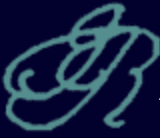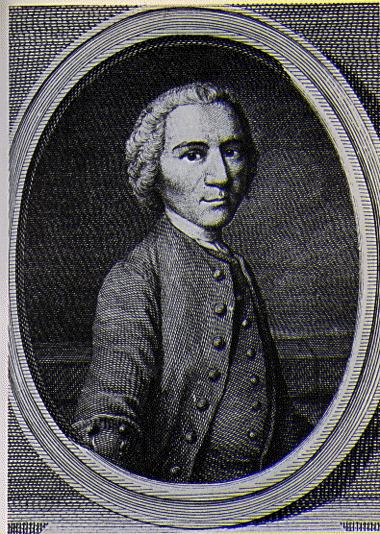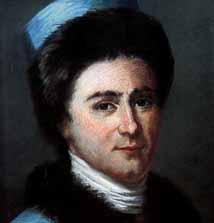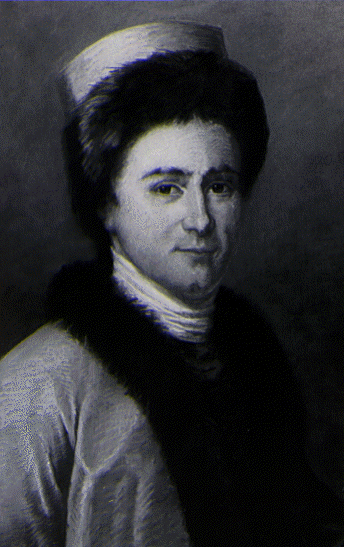PORTRAITS OF ROUSSEAU
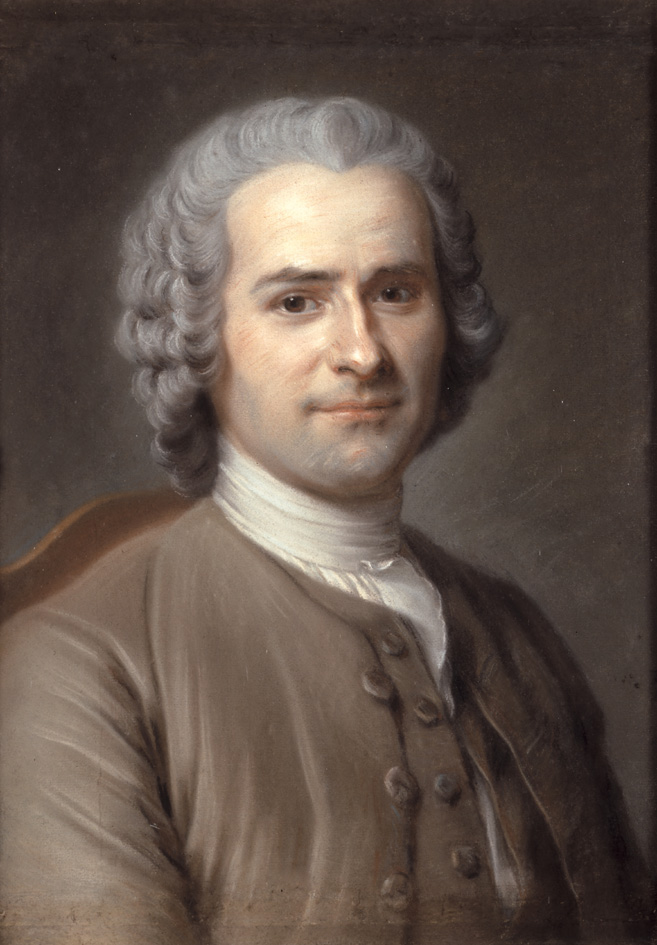
The La Tour portrait.The most familiar of all Rousseau portraits was painted in 1753 by Maurice Quentin de La Tour (1704-1788). He was a friend of Rousseau’s and Rousseau retained a great affection for the portrait over the years. There are several different versions of the painting, a pastel, similar but not identical, executed at various dates by the painter. At the time of the original portrayal, Rousseau was aged 40/41. He had written the First Discourse (Discourse on the Sciences and the Arts, 1751) and his opera Le Devin du village (1752-1753), but his major works still lay ahead of him.
Portrait par La Tour. Le plus célèbre des portraits de Rousseau est peint en 1753 par Maurice Quentin de La Tour (1704-1788). Le peintre est un ami de Rousseau, qui apprécie beaucoup l’œuvre et continue longtemps à lui accorder une place à part. Le tableau, un pastel, est copié plusieurs fois par l’artiste à des époques diverses, mais représente toujours le Rousseau de 1753, âgé de 40/ 41 ans. A cette époque, Rousseau avait écrit le Premier Discours (Discours sur les sciences et les arts, 1751) et son opéra Le Devin du village (1752-1753) mais ses œuvres les plus importantes restaient à faire.
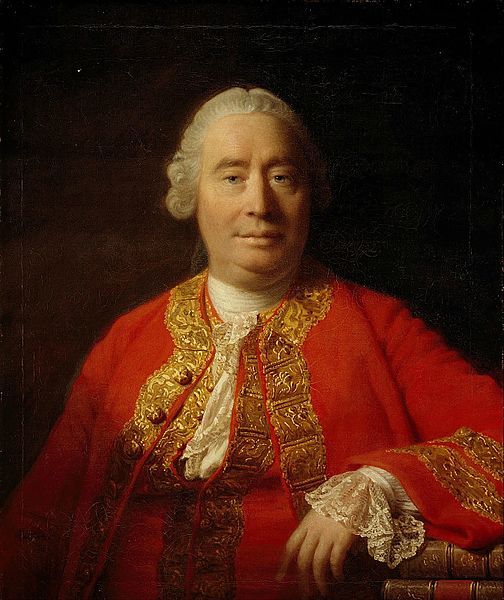
The companion portrait: David Hume by Allan Ramsay (National Gallery of Scotland, Edinburgh).
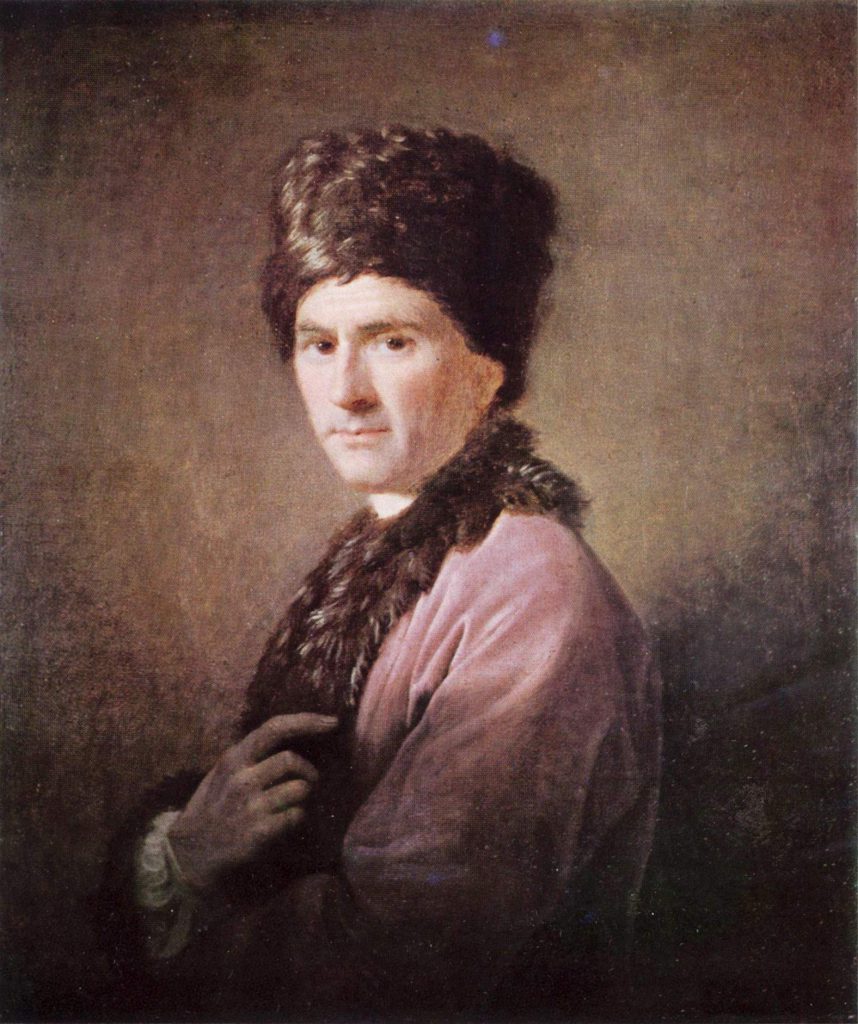
The Ramsay portrait. This great portrait of Rousseau is by the Scottish painter Allan Ramsay (1713-1784). Rousseau is in Armenian costume: note the position of the index finger, pointing to the heart. He sat for the portrait in London in 1766. After the condemnation of Emile in 1762, Rousseau had fled to Switzerland and settled in Môtiers, near Neuchâtel, then briefly on the île St-Pierre in the lake of Bienne. Driven out by the government of Berne, which controlled the island, he sought refuge in England at the invitation of the philosopher and historian David Hume. Ramsay and Hume were friends, and Ramsay painted a companion portait of Hume, showing his firend as a prosperous man of the world. The contrast between the two portraits has given rise to different interpretations. Clearly, Hume is the philosopher in society, while Rousseau is the philosopher who flees from or is driven out of society. After that, every viewer must make his or her own judgement of the painter’s intentions. What is certain is that Rousseau detested the portrait, or more particularly the often sombre engravings reproducing it.
Portrait par Ramsay. Ce magnifique portrait de Rousseau est l’œuvre du peintre écossais Allan Ramsay (1713-1784). Portant l’habit arménien, Rousseau pose l’index droit contre le cœur. Le portrait fut exécuté à Londres en 1766. Après la condemnation de l’Emile à Paris en 1762, Rousseau s’enfuit en Suisse et s’installe à Môtiers, près de Neuchâtel, puis très brièvement sur l’île St-Pierre ( lac de Bienne). Chassé de là par le gouvernement de Berne, maître de l’île, il chercha refuge en Angleterre à l’invitation du philosophe et historien David Hume. Ramsay et Hume étaient amis: Ramsay peint, comme pendant au portrait de Rousseau, celui de son ami Hume, dépeint comme un mondain aisé. Le contraste entre les deux portraits donne lieu à des interprétations divergentes. Hume est manifestement dépeint en philosophe à l’aise dans la société, Rousseau comme celui qui fuit la société ou en est chassé par les autres. En dernière analyse, chacun doit formuler son propre jugement. Ce qui est certain, c’est que Rousseau lui-même détestait le portrait, et en particulier les gravures, souvent très sombres, qui en sont tirées.
(National Gallery of Scotland. Reproduced from Wikimedia Commons. Source: The Yorck Project (2002),
10.000 Meisterwerke der Malerei (DVD-ROM), distributed by DIRECTMEDIAPublishing GmbH. ISBN: 3936122202)
PEOPLE IN ROUSSEAU’S LIFE
PLACES IMPORTANT TO ROUSSEau
- Birthplace in Geneva: 40 Grand’Rue (now the Espace Rousseau)
- Scenes from Les Charmettes
- Scenes from Montmorency*
DEPICTIONS OF SCENES FROM ROUSSEAU’S LIFE
- The Tree in Bossy (Confessions, Book I)
- An Afternoon with Two Young Ladies (Confessions)
- Rousseau and Bacle
- Rousseau the Botanist
DEPICTIONS OF SCENES FROM ROUSSEAU’S WORK
- The Race for the cakes in Emile
- Emile as Gardener
- The Kiss in La Nouvelle Heloise
- The Death of Julie in La Nouvelle Heloise
